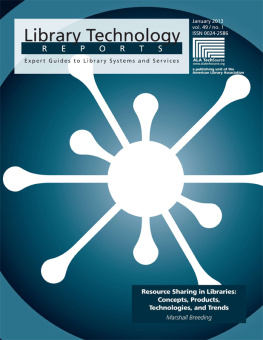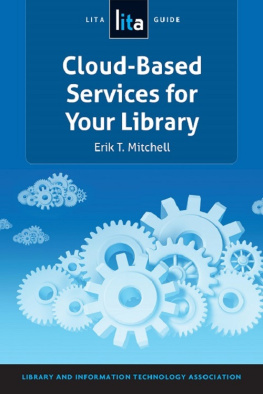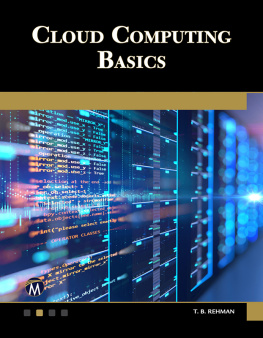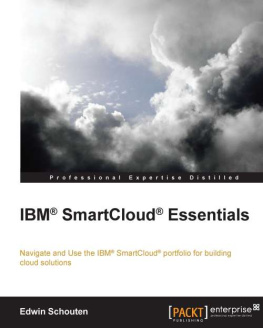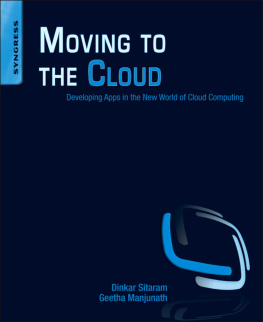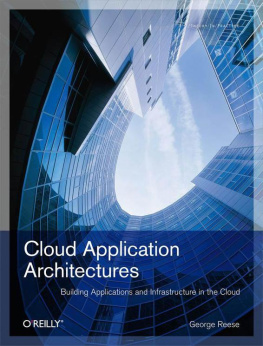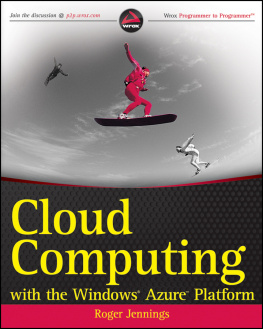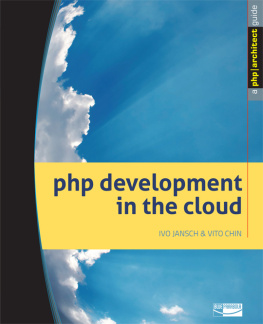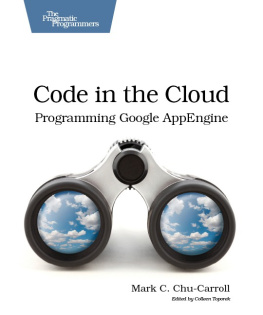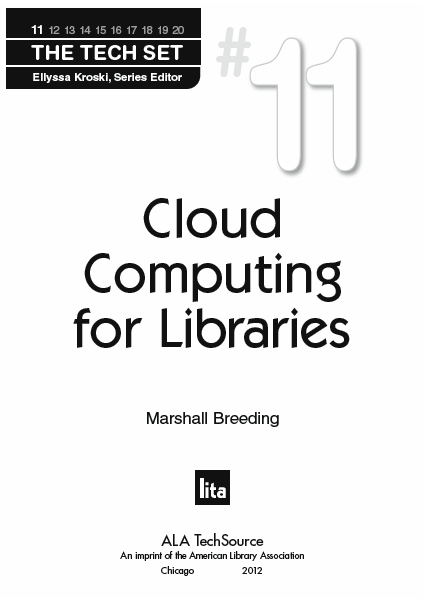
2012 by the American Library Association. Any claim of copyright is subject to applicable limitations and exceptions, such as rights of fair use and library copying pursuant to Sections 107 and 108 of the U.S. Copyright Act. No copyright is claimed for content in the public domain, such as works of the U.S. government.
Library of Congress Cataloging-in-Publication Data
Breeding, Marshall.
Cloud computing for libraries / Marshall Breeding.
p. cm. (The tech set ; #11)
Includes bibliographical references and index.
ISBN 978-1-55570-785-9
1. Web servicesLibrary applications. 2. Cloud computing. 3. Electronic information resourcesManagement. I. Title.
Z674.75.W67B74 2012
025.04dc23
2012007207
This book is dedicated to my wife Zora,
who shares all the facets of my life and inspires all that I do.
Contents
Dont miss this books companion website!
THE TECH SET Volumes 1120 is more than just the book youre holding!
These 10 titles, along with the 10 titles that preceded them, in THE TECH SET series feature three components:
1. This book
2. Companion web content that provides more details on the topic and keeps you current
3. Author podcasts that will extend your knowledge and give you insight into the authors experience
The companion webpages and podcasts can be found at:
www.alatechsource.org/techset/
On the website, youll go far beyond the printed pages youre holding and:
Access author updates that are packed with new advice and recommended resources
Use the website comments section to interact, ask questions, and share advice with the authors and your LIS peers
Hear these pros in screencasts, podcasts, and other videos providing great instruction on getting the most out of the latest library technologies
For more information on THE TECH SET series and the individual titles, visit www.neal-schuman.com/techset-11-to-20.
Cloud computing offers organizations new cost-effective ways to use web services for their computing needs, including software applications, data storage, cloud development platforms, and processing power. This top-notch primer by cloud technology expert Marshall Breeding provides a comprehensive view of the cloud computing landscape, the types of solutions available, their benefits and limitations, and how to use them in your library. Learn how to leverage the cloud for e-mail and document sharing, storing media collections, hosting your library website, OPAC, or digital repository, and even powering a web-driven database in this one-stop passport to cloud computing. Cloud Computing for Libraries reveals how to harness the power of the cloud through well-known services such as Amazon Web Services and DuraCloud and even how to use Google App Engine to create your own cloud applications.
The ten new TECH SET volumes are designed to be even more cutting-edge than the original ten. After the first ten were published and we received such positive feedback from librarians who were using the books to implement technology in their libraries as well as train their staff, it seemed that there would be a need for another TECH SET. And I wanted this next set of books to be even more forward-looking and tackle todays hottest technologies, trends, and practices to help libraries stay on the forefront of technology innovation. Librarians have ceased sitting on the sidelines and have become technology leaders in their own right. This series was created to offer guidance and inspiration to all those aspiring to be library technology leaders themselves.
I originally envisioned a series of books that would offer accessible, practical information that would teach librarians not only how to use new technologies as individuals but also how to plan and implement particular types of library services using them. And when THE TECH SET won the ALAs Greenwood Publishing Group Award for the Best Book in Library Literature, chapter looks ahead to future directions of these technologies. These new chapters round out the books that discuss the entire life cycle of these tech initiatives, including everything from what it takes to plan, strategize, implement, market, and measure the success of these projects.
While each book covers the AZs of each technology being discussed, the hands-on chapters, chock-full of detailed project instructions, account for the largest portions of the books. These chapters start off with a basic recipe for how to effectively use the technology in a library and then build on that foundation to offer more and more advanced project ideas. Because these books are designed to appeal to readers of all levels of expertise, both the novice and advanced technologist will find something useful in these chapters, as the proposed projects and initiatives run the gamut from the basic how to create a Foursquare campaign for your library to how to build an iPhone application. Similarly, the new Drupal webmaster will benefit from the instructions for how to configure a basic library website, while the advanced web services librarian may be interested in the instructions for powering a dynamic library website in the cloud using Amazons EC2 service.
I have been watching and learning from Marshall Breedings presentations and publications for many years now. And when I realized that the series should include a book on cloud computing, I knew that he needed to write it. Marshalls extensive knowledge and experience really shine through in this outstanding book, Cloud Computing for Libraries. If you want to learn all there is to know about the cloud and how to effectively leverage it in your library, this is the book for you.
Ellyssa Kroski
Manager of Information Systems
New York Law Institute
http://www.ellyssakroski.com/
http://oedb.org/blogs/ilibrarian/
Ellyssa Kroski is the Manager of Information Systems at the New York Law Institute as well as a writer, educator, and international conference speaker. In 2011, she won the ALAs Greenwood Publishing Group Award for the Best Book in Library Literature for THE TECH SET, the ten-book technology series that she created and edited. Shes also the author of Web 2.0 for Librarians and Information Professionals, a well-reviewed book on web technologies and libraries. She speaks at several conferences a year, mainly about new tech trends, digital strategy, and libraries. She is an adjunct faculty member at Pratt Institute and blogs at iLibrarian.
In a time when the term cloud computing seems tagged to almost any kind of technology product to make it sound new and trendy, Cloud Computing for Libraries distinguishes the substance from the hype to make you well-equipped to understand and evaluate its merits, risks, and value to your organization.
Cloud computing represents one of the most important technology trends of our time. Every day we make use of computing and information resources through a web browser powered by some distant and diffuse infrastructure. This model has become routine for personal usee-mail, word processing, social networking, photo sharing. In more recent months and years cloud computing has entered the library technology sphere. Cloud computing brings the opportunity for libraries to shift away from the need to own and operate their own servers to power their core automation applications and to instead shift to gaining similar functionality through web-based services. In order to develop technology strategies in this context, its essential for libraries to have a solid understanding of this new technology landscape, to move beyond a vague awareness of cloud computing to a more nuanced, well-informed understanding of such concepts as software-as-a-service, infrastructure-as-a-service, and platform-as-a-service and the relative advantages, caveats, and risks.
Next page

